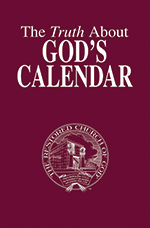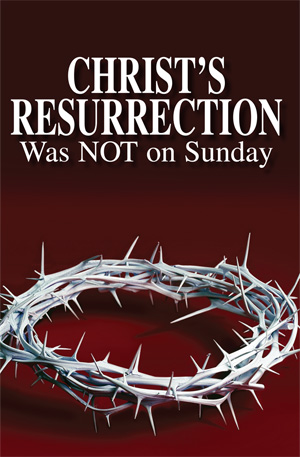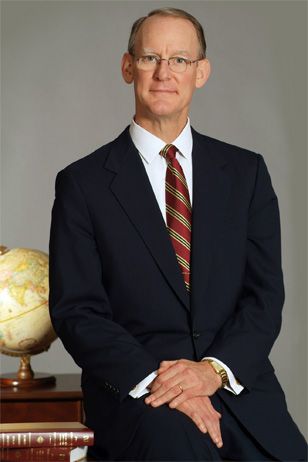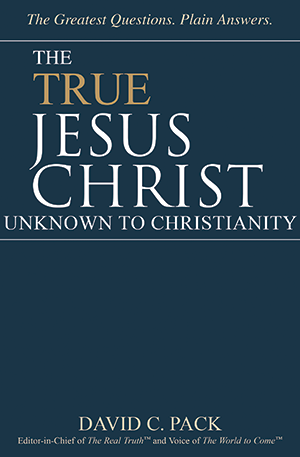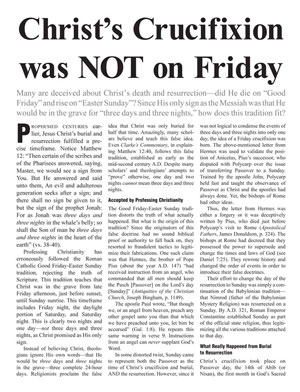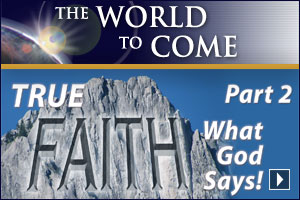What proof did Christ offer that He was the Messiah? The Pharisees challenged Him on this very point and He gave them an answer—His sign that He was true: “An evil and adulterous generation seeks after a sign; and there shall no sign be given to it, but the sign of the prophet Jonas: For as Jonas was three days and three nights in the whale’s belly; so shall the Son of man be three days and three nights in the heart of the earth” (Matt. 12:39-40).
How, then, does the “Good Friday-Easter Sunday” tradition fit? Can 72 hours (three days and three nights) be made to fit into a period between late day Friday and early Sunday morning? Why do so few even seem to question this only sign that Christ said He would give that He was the Messiah? Could He have been wrong on this single great proof of who He was and still have been the Messiah?
Since no one directly witnessed His Resurrection, we must examine the only available authority on this great event—your Bible! The apostle Paul said to “Prove all things; hold fast that which is good” (I Thes. 5:21). The Bible is the revealed Word of God. It is His written revelation to mankind. Prepare to be shocked at what the Bible does and does not say on this vital point!
While professing Christians willingly accept the common traditions of men, true disciples (learners, students) of Christ want to know what HE says. Christ warned, “In vain do they worship Me teaching for doctrines the commandments of men. For laying aside the commandment of God, you hold the tradition of men” (Mark 7:7-8).
What standard will you use? Will you accept the recorded facts of history found in God’s Word—or continue with the familiar, comfortable traditions of men?
The Tremendous Importance of His Sign
Is it any surprise that Satan the devil would want to deny that Christ was the Messiah? Is it any surprise that he would seek to relegate the story of Jonah and the “whale” to folklore, myth, symbolism and superstition? If this miracle never occurred, then Christ’s sign, based entirely upon it, is nothing more than hollow and pointless allegory.
Consider what is at stake in Jesus’ statement in Matthew 12:39-40. Jesus placed His entire identity on the line with His sign. If He failed His only sign, then He is not our Savior and nothing He said can be trusted. In effect, if His prophecy of this sign failed, then He must be considered a false prophet. He would be a fraud and should not be followed—and mankind has no savior!
Do not confuse the fact of the resurrection’s occurrence as being the sign, with the question of “how long”—the precise length of time—He would be in the grave before His resurrection took place. This was the test of His sign.
Be under no illusion about the position of Bible critics—sometimes known as “higher critics.” While it is embarrassing to watch them try to explain away Christ’s only sign, they really have no choice. If Christ’s sign remains intact, the Good Friday-Easter Sunday tradition would be exposed as groundless—false—and collapse in a heap!
Some Bible commentaries nearly leave one breathless in astonishment when they assert that three days and three nights, in the Greek language, can actually mean three periods of time—either day or night. Friday night, Saturday daylight and Saturday night are portrayed as these three “periods” of time.
At least some are honest enough to acknowledge that the Friday-Sunday tradition is, in fact, only about half the length of time that Christ said He would be in the grave.
What Are Days and Nights?
Can we know for certain or must we speculate on the meaning—the definition—of a day or the meaning of a night? Does the Bible leave this definition open to opinion—with one man’s opinion as good as another?
Jonah 1:17 plainly says, “And Jonah was in the belly of the fish three days and three nights.” The Old Testament was written in Hebrew. Here, scholars face a dilemma when they explore the phrase “three days and three nights.” Some of these same “scholars”—who are actually critics—acknowledge that the Hebrew language must mean a 72-hour period of time. There is no room for any “periods of time” theories in the Hebrew.
Here is the problem! Christ said His time in the grave would be “as Jonah was three days and three nights in the great fish’s belly…” The word “as” sets the standard of comparison. It leaves no room to “negotiate” the meaning of the Greek. The margin of Jonah 2:2 even compares Jonah’s time in the “great fish” to “the grave.” In this verse, the Hebrew word translated “hell” is sheol. It literally means “the grave.” The comparison of Christ to Jonah—in a grave—becomes complete.
Did Christ understand the length of a “day” or the length of a “night”? He did! In John 11:9-10, He asked, “Are there not twelve hours in a day?…But if a man walk in the night, he stumbles.”
The Bible mentions in several places that Christ rose “the third day.” How long was this? The first half of the creation chapter, in Genesis 1:4-13, plainly says that God “divided the light from darkness. And God called the light Day and the darkness He called Night. And the evening [darkness] and the morning [light] were the first day…And the evening [darkness] and the morning [light] were the second day…And the evening [now three periods of darkness called night—three nights] and the morning [now three periods of light called day—three days] were the third day.”
This is the Bible’s definition of the length of time accounted for within the phrase “the third day.” It spanned three periods of darkness and three periods of light. We have proven that each of these periods is twelve hours. Six times twelve hours equals 72 hours! What could be more plain?
The Source of the Problem
We have now established the exact duration of Christ’s time in the tomb as a 72-hour period. He was there for three days and three nights “as Jonah was…” We will shortly examine four additional scriptures that prove the same thing.
In Mark 7:13, Christ strongly warns against “making the word of God of none effect through your tradition.” How is it that intelligent, well-educated Bible scholars seem to “know” that Jesus was crucified on Friday and resurrected on Sunday? What is it about Christ’s clear, straightforward sign that they cannot accept? The answer lies in the comfort of long-held but clearly false traditions! (To learn more about Christ‚Äôs crucifixion and resurrection, read our booklet The True Origin of Easter.)
One of the most important rules of Bible study is to gather all of the scriptures on a subject to get the complete picture of that subject. There are other scriptures that prove the 72-hour duration of Christ’s time in the tomb.
John 2:19-21 states, “Jesus answered and said unto them, Destroy this temple, and in three days I will raise it up…But He spoke of the temple of His body.” Clearly, the use of the phrase “in three days” means that Christ’s time in the tomb could not exceed 72 hours—or it would not be within the three-day period.
Conversely, Matthew 27:63 establishes Jesus’ time in the tomb as not less than three days, or 72 hours, for it says, “After three days I will rise again.”
Examining two additional verses in Mark’s gospel account prove the same parameters of John 2 and Matthew 27. Notice Mark 8:31: “And He began to teach them, that the Son of man must suffer many things, and be rejected of the elders, and of the chief priests, and scribes, and be killed, and after three days rise again.” A late Friday afternoon entombment means a late Monday afternoon resurrection. It is as simple as counting one, two, three! Finally, in reference to this verse, if it stood alone without other scriptures to qualify it—it must be plainly admitted that Christ’s use of the word “after” does not, by itself, limit His time in the tomb to 72 hours. He could still be there longer. He just could not be there one bit less than 72 hours. This much should now be clear.
We are now ready for Mark 9:31: “They shall kill Him; and after that He is killed, He shall rise the third day.” This verse presents another limitation on Christ’s time in the tomb. Consider! This verse, if taken by itself, places His time in the grave between 48 and 72 hours. The phrase “the third day” caps the duration at 72 hours—but it also creates a minimum of 48 hours—or the period would be somewhere in the second day! Again, if this verse is to be taken alone, a Friday afternoon crucifixion requires a resurrection sometime after late Sunday afternoon and no later than late Monday afternoon. (Our article ‚ÄúChrist‚Äôs Crucifixion Was Not on Friday‚ÄĚ reveals much more about this subject.)
Establishing the Time of the Resurrection
The following fact should be clear. The exact moment and time of day when Christ was placed in the tomb had to coincide with the exact time of day of His Resurrection. We must establish precisely when Christ was placed in the tomb. We will then know precisely when He left the tomb. Plainly, any time of day or night—morning, noon, afternoon, evening, midnight, etc.—that Christ would have entered the tomb would have to be the very same time He would depart it by His resurrection!
While on the stake, after “the ninth hour” (three o’clock in the afternoon), Jesus “cried out” (Matt. 27:46-50; Mark 15:34-37; Luke 23:44-46) and died. Luke 23:44 also makes a reference to “the sixth hour, and there was darkness in all the earth until the ninth hour.” The sixth hour is six hours after sunrise—or noon! This would make the ninth hour three o’clock.
These events occurred on the day before “the Sabbath”—the day called “the preparation” (Matt. 27:62; Mark 15:42; Luke 23:54). We should recognize that the Bible counts days as the period from evening to evening (Lev. 23:32) or sunset to sunset. Recall Genesis 1: “…the evening [night or darkness] and the morning [day or light]…”
John 19:42 explains, “There laid they Jesus therefore because of the Jews’ preparation day.” Jewish burial law (vs. 31) forbade the bodies of the dead remaining unburied at the outset of any Sabbath day or feast day. Remember, Luke 23:46 explained that Christ died at, or shortly after, three o’clock in the afternoon. He would have been buried soon thereafter—prior to sunset.
We have not yet established the day of the week that the crucifixion occurred. However, our previous computation and comparison of related scriptures reveals that Christ must have risen sometime after three o’clock in the afternoon—on whatever would have been the day that was three days later.
A brief summary is in order at this point. Again, Christ’s Messiahship is at stake. Based on when He was buried (sometime between three and six o’clock on the day of His crucifixion), His sign as our Messiah was that He must—I repeat He must—rise at the same time 72 hours later. Otherwise, He is an impostor and a fraud, and we have no Savior. Unless we wish to make “the word of God of none effect through [our] tradition,” we must now admit that a popular, great tradition has crashed in a heap of rubble. Some honest questions remain.
The Crucifixion Preceded a Sabbath—But Which Sabbath?
We have now reached the important issue of when to start counting the 72-hour period of Christ’s sign. It involves the Sabbath. But which Sabbath? Could this question lie at the heart of why people assume a Friday crucifixion? We have already proven from all four Gospels that the day of Christ’s crucifixion was called “the preparation.” John 19:14 explains “it was the preparation of the Passover.” However, verse 31 goes further by stating, “for that sabbath day was an high day.” What does this mean?
What is a Sabbath that is a high day?
Any Jew will tell you that a “high day” is a feast day or an annual Holy Day! Leviticus 23 describes seven of these days that the nation of ancient Israel was commanded to keep year by year. A simple review of this chapter (verses 24, 26-32 and 39) reveals that God considered these days to be Sabbaths. Notice that Leviticus 23:2 refers to all of these Sabbaths as “the feasts of the Lord” and “even these are My feasts.” This same verse also calls them “holy convocations”—meaning commanded assemblies. These days do not fall on the same day, year after year, any more than do the common pagan holidays that most people observe today.
Matthew 26:2 states, “You know that after two days is the feast of the passover, and the Son of man is betrayed to be crucified.” (Leviticus 23 shows that the Passover was the one feast that was not also a Sabbath, wherein work was prohibited.) There is no doubt that Christ was crucified on the Passover.
The original Passover is described in Exodus 12. A lamb was slain and the blood of this lamb was struck over the doorposts of all the Israelite houses. It was this blood that caused the death angel to pass over any particular house, thus saving the firstborn of that house from death! Hence, the term “passover.”
The Old Testament Passover always preceded the annual Sabbath called the first Day of Unleavened Bread. This day was a high day or a feast day to be celebrated each year, again, on the day immediately following the Passover. Notice Numbers 28:16-17: “And in the fourteenth day of the first month is the passover of the Lord. And in the fifteenth day of this month is the feast.” This feast was the first Day of Unleavened Bread.
Jesus Christ was slain by crucifixion on the exact same day that the Passover lamb had been slain every year. While the above referenced booklet will take the reader into greater detail on this point, suffice to say that I Corinthians 5:7 plainly states, “Christ our passover is sacrificed for us.” John the Baptist called Christ “the Lamb of God, which takes away the sin of the world” (John 1:29). Christ was crucified on the Passover and this day then would automatically be a preparation day for the feast day, or annual high day Sabbath—which was to begin almost immediately after His burial.
As mentioned, annual Sabbaths could occur on any day of the week. Tuesday and Thursday are more common than any other day for the first Day of Unleavened Bread, following the Passover. Thursday is probably the most common of all. For instance, in the thirty-six years (counting inclusively) between 1998 and 2033, the first Day of Unleavened Bread occurs on a Thursday 12 times, and on a Tuesday 10 times. All other days are less often during this period. In the year of Christ’s crucifixion, according to the Hebrew calendar, the Passover occurred on a Wednesday! This means that the annual Sabbath had to be one day later—or Thursday! It was, in fact, this sabbath that was approaching, thus requiring the swift burial of Jesus’ body prior to its arrival. The weekly Sabbath, or Saturday, was to occur two days after that.
Which Was the Day of the Resurrection?
If Christ’s Resurrection was not on Sunday, then when was it? The world commonly believes that it was Sunday morning. Does the Bible say this, or have millions made an assumption?
John 20:1 says, “The first day of the week comes Mary Magdalene early, when it was yet dark, unto the sepulchre, and sees the stone taken away from the sepulchre.” Compare this verse with Mark 16:2 and Luke 24:1.
It is now very early Sunday morning (it is still dark) and the tomb is open. Do these verses supply the supposed proof for the Sunday resurrection tradition? Do they support “Easter sunrise services”? A problem already presents itself. Christ is gone from the tomb before sunrise!
Now notice Luke 24:6. Mary Magdalene, and the others with her, are described as finding two angels standing before them. These angels stated plainly to these women, “He is not here, but is risen.” Also see Mark 16:6 and Matthew 28:5-6.
Christ was GONE—He was already risen! Notice the past tense of the two angels’ statement.
We can now establish the day of Christ’s resurrection. We have already established the time of day of His death and the burial soon thereafter and, therefore, also the time of His resurrection. It was late afternoon, between 3 and 6 p.m. Obviously, Christ was already risen, by this time, in the darkness of Sunday morning—because He had been gone from the grave since late afternoon on saturday! Let us state this plainly. Christ died on the late afternoon of a Wednesday Passover and was resurrected three days later on the late afternoon of the very next Saturday.
Thus, the resurrection did not even occur on Sunday—period!
Christ’s Sign Fulfilled
Who will you believe? Will it be theologians, scholars, higher critics and other traditionalists, who love to profess Jesus, but reject the sign that He gave? Or will you believe the words of your Bible—that Jesus Christ rose from the dead exactly as He said He would?
It is now time to read a different Gospel account of the two angels’ statement to the women at the tomb. This time notice Matthew 28:6. It states, “He is not here: for He is risen, as He said.” This would be impossible if Christ had been in the grave one second more or one second less than 72 hours. The One who said, “Are there not twelve hours in a day?” was well aware of exactly how long His sign required that He remain in the “belly of the earth”—the grave.
Not only did Christ state that He would fulfill His sign but it was also established by the mouth of two witnesses (Deut. 17:6; 19:15), who happened to be mighty angels of God.
Paul adds a final, great, corroborating proof that Christ did spend three entire days and three entire nights—from late Wednesday afternoon until late Saturday afternoon—in the tomb. In I Corinthians 15:3-4, Paul validates the words of Christ and the two angels who witnessed His fulfillment. Notice: “For I delivered unto you first of all that which I also received, how that Christ died for our sins according to the scriptures; And that He was buried, and that He rose again the third day according to the scriptures.”
Further, the prophet Daniel gave a prophecy he described as “seventy weeks” (Dan. 9:24-27). In this prophecy, the Messiah was foretold to be cut off “in the midst of the week.” Wednesday is literally the fourth, or middle day, of a seven-day week. So then, it was in the “midst of the week” that Christ was “cut off.” (It should be noted that this prophecy in Daniel was a foretelling of Christ also being “cut off” in the midst of His ministry—after 3 1/2 years [Fall A.D. 27 to Spring A.D. 31]—if the biblical application of “a day for a year” is properly applied to the seventieth week of that prophecy.)
Are There Other Questions for Examination?
Some will say, “But what about this scripture or what about that scripture or this point or some other point?” Are there other questions that should be examined?
Some ask about Mark 16:9. Certain people suppose that this verse proves the Sunday resurrection theory. Does it? Simply reading the verse makes plain that it does not say Christ “was rising” but rather He “was risen” from the grave. Take time to read the verse. It uses past tense because, as we have seen, Christ had been gone from the grave for about twelve hours (since late Saturday afternoon) by this time on Sunday morning.
But what about Luke 24:21? It states, “…and beside all this, today is the third day since these things were done.” The phrase “these things” is a reference to all the events related to the crucifixion. Verses 18-20 describe the particulars of “these things” to be Christ’s delivery to Pilate, His trial, His crucifixion, His beating, His death, up to the setting of the seal and the watch over His tomb, which occurred the following day—Thursday. This discussion occurred on Sunday, and Sunday was the third day since all of “these things” were completed (on Thursday) with the setting of the watch on Christ’s tomb. Therefore, this is not a verse which can be used to set aside everything that all of the other scriptures on this subject have proven.
A Final Proof
Matthew 28:1 contains an important statement that bears examination before this subject can be laid to rest. Notice that this verse begins with the phrase “In the end of the sabbath.” Most versions render it this way, but some use the phrase “After the Sabbath.” The Ferrar Fenton translation correctly renders this phrase. Fenton translates this phrase with “after the Sabbaths” (plural). Fenton is possibly the only translator to note that the original Greek has the word “Sabbaths” in the plural. This is important. We will see why.
Notice Mark 16:1: “Mary Magdalene, and Mary the mother of James, and Salome, had bought sweet spices.” Their purpose was to anoint the body of Jesus. They were not able to buy their spices until after the Sabbath was passed. Yet Luke 23:56 explains that they prepared these spices “and rested the Sabbath day according to the commandment.” While this may appear confusing, it need not be if these two passages are studied carefully.
Only one possible explanation emerges. It is that these women bought and prepared their spices on Friday, after the Thursday annual high day Sabbath—or the first feast day of Unleavened Bread—and then rested on the weekly Sabbath, which was Saturday according to God’s plain command found in Exodus 20:8-11.
Mark 16:1 and Luke 23:56 must refer to two separate Sabbaths of that crucifixion week—with a day in between, Friday. Any other explanation creates a contradiction of scripture and the Bible never contradicts itself. (The complete timeline of events, along with Christ‚Äôs role in the salvation process, is covered in thorough detail in our book The True Jesus Christ ‚Äď Unknown to Christianity.)
Sunday Is Not “The Lord’s Day”
There is another very important reason why theologians and many others must conclude that the resurrection was on Sunday! Sunday is commonly referred to as “the Lord’s Day.” While the true Lord’s Day of the Bible is actually the Day of the Lord (Joel 2:1-11), the term “the Lord’s Day” has come to be synonymous with Sunday. But why? The reason is simple. If Sunday can be established as the day that Christ was resurrected, it can be a means of validating and “authorizing” the keeping of Sunday by the churches of the world, in place of God’s true Sabbath.
You have already seen references to the Sabbath day in this booklet. Exodus 20:8-11 shows that the keeping of the Sabbath is the Fourth Commandment! It was always the seventh day of the week and God never authorized Sunday—which would be keeping the first day instead. God hallowed it at creation—long before there were any Jews or Israelites to keep it (Gen. 2:1-3). The Sabbath was to be kept “forever”—“continually”—and “throughout the generations” of Israel, God’s intended model nation (Ex. 31:12-17). Christ kept it (Luke 4:16) and said that He was Lord of it and that it was “made for man” (Mark 2:27-28). He did not say it was “made for the Jews only.” Paul observed it (Acts 13:42, 44; 17:2; 18:4).
The subject of keeping the Sabbath as God’s command for true Christians is a big subject requiring its own book to explain it. Therefore, more than the Good Friday-Easter Sunday tradition collapses if Christ was in the grave for 72 hours instead of 36. The largest single reason for the unscriptural tradition (recall Mark 7:7) of Sunday-keeping collapses at the same time. God has always said, “Remember the Sabbath day, to keep it holy” (Ex. 20:8). He has never said, “Remember Sunday to keep it holy—and just call it the Lord’s day!” The reader is left to ponder this. (Request our free book Saturday or Sunday ‚Äď Which Is the Sabbath? for absolute proof of which day is the Christian Sabbath.)
What Is the Source of Your Beliefs?
Herbert W. Armstrong concluded his booklet THE RESURRECTION Was NOT on Sunday with:
“For proof of the pagan origin of such long-cherished days as Easter and Christmas, request our free booklets on those two subjects. The shocking truth is that nowhere can you find sanctions for those two holidays in the Bible. It is time we discovered the source of our religious beliefs and found out whether we ought to observe them.”

